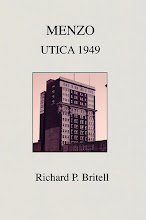
I am not a New Yorker. This fact came home to me very vividly the first time I ever entered a gallery in New York hoping to interest it’s director in my work. I chose a gallery which was exhibiting huge images of woman’s heads in black and white, images over eight feet high and six feet wide which filled the windows of their space on Madison Avenue. I went in feeling some trepidation. In a large empty room sat a beautiful foreign looking woman at a huge desk. I walked up to her and said, “I would like to show the gallery director a portfolio of my paintings and drawings.”
She said, “I’m sorry sir, but this isn’t a gallery, it’s a hair salon.”
The above is the truth, it’s the absolute truth. But nevertheless I did manage to have several one person shows in New York City. My first show consisted of only paintings of architecture. There were thirty-two paintings in the show and I sold every one. The show was reviewed in the New York Times by Hilton Cramer. This is an excerpt of what he said.
There are modes of realism in which the depiction
of concrete detail is so concentrated- and so obsessive-
that the visual result bears a distinct esthetic kinship to pictorial
abstraction. Mr. Britell’s subject matter is drawn from the world
of pre-modernist architecture. What he focuses on are the brick
facades,stonework structures and the elegant decorative
embellishments that were once a standard feature of neo-
classic and other historicist styles of American urban
architecture. These he depicts with a great deal of pictorial
force. Often the facade of a building is observed in the kind of
close up view that becomes, in effect, the equivalent of
a geometrical abstract painting. He has a very analytical
eye, and he commands an impressive technique. If there is also an
element of nostalgia in these works it isn’t particularly bothersome.
After all, we all have ample reason to cherish this architecture
today, and Mr. Britell’’s homage to it proves
wholly equal to it’s quality.
The drawing in this listing is an example of what he was talking about.






